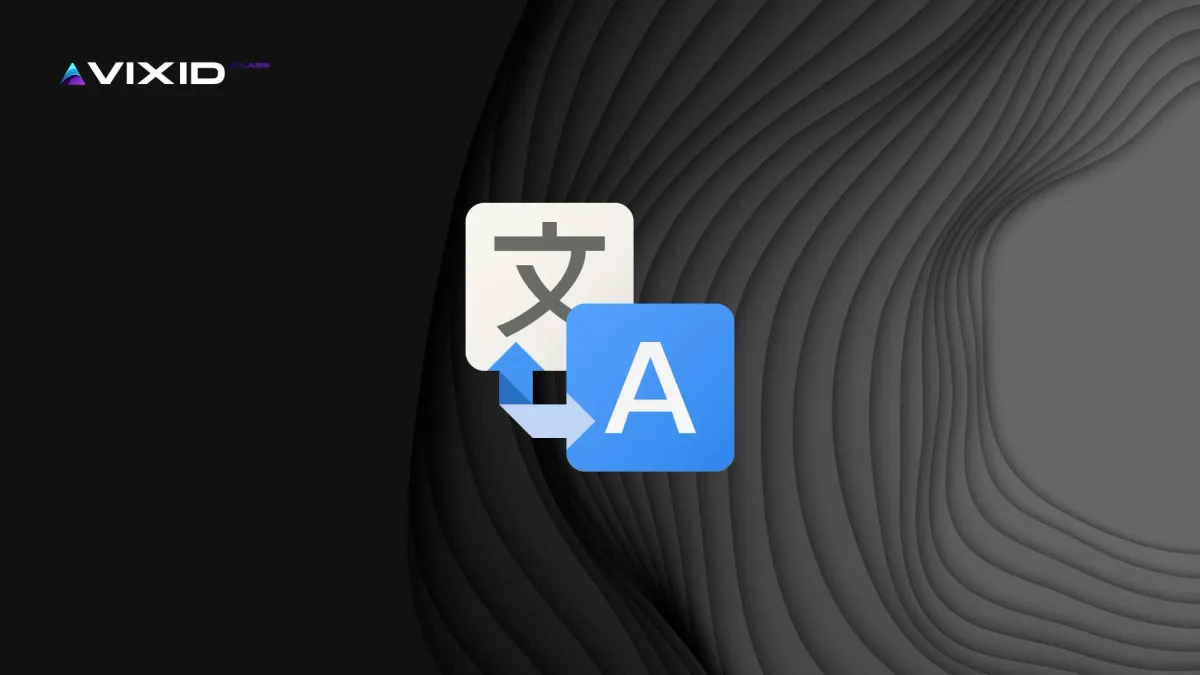Why Google Isn’t Indexing Your Multilingual Websites — And What You Can Do About It

Over the past year, we've worked with a number of international businesses — from SaaS platforms expanding into DACH to fashion startups localizing content for the Spanish coast — and we’ve noticed a recurring problem:
Everything looks correct.
You’ve translated your site, addedhreflangtags, followed Google’s guidelines.
Yet Search Console shows: “Crawled – currently not indexed.”
And it keeps happening — especially with multilingual sites where the same core information is presented in several languages, like English, German, French, and Russian.
In this article, we’ll walk through the most common (and often overlooked) reasons Google may ignore your localized pages — even when everything seems technically fine. More importantly, we’ll show you what to fix without losing traffic, leads, or SEO equity.
Let’s dive in — minus the unnecessary technical jargon, but with just enough detail to make this userfull.
The Most Common Reasons Multilingual Pages Don’t Get Indexed
It’s surprisingly common to see a site rank perfectly in one language (usually English), while the other language versions remain invisible in search — frustrating both clients and SEO teams. Below are the key reasons we’ve seen across real-life client projects in Germany, Spain, and beyond.
1. Google Thinks It's Duplicate Content
Google doesn’t “understand” language the way humans do. A Spanish page and its English version may look completely different to a human — but to Google, if the structure, metadata, and internal elements are identical, and the translation is too literal or machine-generated, it can easily flag the page as a duplicate of the original.
We saw this firsthand with a German e-commerce brand: their English product pages were translated via DeepL, but everything else — layout, images, CTA blocks — remained untouched. The result? Dozens of non-indexed pages with “Duplicate, Google chose different canonical” messages in GSC.
2. Incorrect or One-Way hreflang Implementation
Adding hreflang in the <head> is not enough.
Google requires bi-directional linking:
If your German version links to the English one via hreflang, the English version must also link back to the German one.
Even more critically — hreflang is not a magic bullet. If your language versions don’t link to each other with standard <a href=""> elements (such as language switchers or footer links), Google might ignore the tags entirely.
This is explicitly mentioned in Google’s documentation:
“We ignore hreflang tags when pages do not link to each other directly.”3. Lack of Internal Linking to Language Versions
We’ve seen this especially with newer European startups: they invest in translations but forget to integrate the language versions into the site’s actual link structure. If no meaningful internal links point to, say, the French version of a landing page — and the site’s crawl budget is limited — Google might never discover or prioritize it.
Remember: If no one links to it, Google assumes no one needs it.
4. Technical Barriers to Indexing
Just because a page is live doesn’t mean Google will index it.
Here are some common technical traps we’ve encountered while working with multilingual platforms, including those built with frameworks like Next.js, Laravel, or TYPO3:
- The localized page is blocked in
robots.txt(often left over from staging environments) - It includes a
noindexmeta tag — accidentally inherited from templates - It returns a 404 or 500 error during Googlebot’s first visit
- The content is dynamically rendered, requiring JavaScript to load — and the fallback SSR is missing or broken
- Page load times are slow, especially in non-primary markets (like German pages hosted on US servers)
Any of these factors can stop indexing cold. And if your localized content lives behind cookie consent walls, login prompts, or AJAX-based navigation, expect trouble unless you handle rendering and accessibility with care.
5. Google Doesn’t See Value in the Page
This is the hardest one for clients to accept — but it’s becoming more and more common.
Even if a localized page is crawlable and technically fine, Google may choose not to index it if:
- It doesn’t have any external backlinks
- The title and description are generic or reused
- It offers no new value to the user, compared to the original version
Remember: indexing is not a right, it’s a competition. Google protects its reputation by ranking only what it considers genuinely useful.
One of our clients — a legal consultancy in Munich — translated their service pages into English. But the copy was rigid, reused the same “We provide top-quality legal services…” line across all pages, and didn’t reflect what English-speaking users actually search for. Result? Pages crawled, but never indexed.
After a full content rewrite (with localized search intent in mind), they started getting impressions and clicks in under 3 weeks.
What Google Actually Wants from Multilingual Sites
Yes, Google provides official documentation on multilingual SEO — but let’s be honest: it’s full of edge cases, footnotes, and vague phrases like “helpful content.” What really matters is how you interpret those rules in practice.
Here’s what we’ve learned from experience, especially in the EU market:
1. Language Versions Must Be Connected Visibly and Technically
It’s not enough to hide language switchers in a hamburger menu or only use hreflang in your sitemap. Google wants to see clear, crawlable, user-accessible connections between your localized pages.
Each language version should include:
hreflanglinks in<head>or sitemap- A clickable
<a href="">link to the other versions (flags, dropdowns, footers — all fine)
Without both, Google may not trust the relationship.
In fact, during one of our internal tests, a multilingual WordPress site using only hreflang in the sitemap — but no visual links — saw its new French pages stuck in “Discovered – not indexed” for over a month. Once we added footer links across all versions, they were indexed within days.
2. Each Language Must Live on Its Own URL
This is non-negotiable. Google explicitly discourages using cookies, session variables, or JavaScript to switch languages without changing the URL.
✅ Good:example.com/en/
example.com/de/
example.com/fr/
❌ Bad:example.com + JS language switcherexample.com/?lang=de
A clean URL structure improves indexing and helps with link sharing, analytics, and sitemap management.
3. hreflang Can Be Placed in the <head> or in the Sitemap — But Structure Matters
Google accepts hreflang annotations in two places:
- Inside the
<head>tag of your HTML - Inside your XML sitemap
Both work — but the larger your site, the more practical it is to manage hreflang via sitemap.
When using an XML sitemap, here’s the format Google expects for multilingual relationships:
<url>
<loc>https://example.com/en/services</loc>
<xhtml:link rel="alternate" hreflang="en" href="https://example.com/en/services" />
<xhtml:link rel="alternate" hreflang="de" href="https://example.com/de/services" />
<xhtml:link rel="alternate" hreflang="fr" href="https://example.com/fr/services" />
</url>Each page must reference all language versions, including itself. That means /en/services needs to mention /de/services, /fr/services, and vice versa — creating a mirror structure across your sitemap.
If you skip one, or forget to update a language mapping after a new deployment — Google might silently skip indexing.
This is where we often see mistakes in larger CMS setups. In one case, a client’s German version of their site was properly linked from the English page, but not vice versa — and only the English page was indexed. Once the missing entries were fixed in the sitemap, indexing resumed normally.
Beyond Translation: Why True Uniqueness Still Wins
Even with perfect technical setup, multilingual pages won’t perform well if they’re just translated copies.
Google’s algorithms now go far beyond “is this duplicate?” They actively evaluate how useful and locally relevant your page is. This includes:
- Replacing generic images with culturally relevant visuals
- Rewriting titles and descriptions to match local search behavior
- Adapting tone, layout, and even features based on user expectations
Real Case: Translating a German Site for the UK Market
We recently helped a German HR software company localize their site for the UK. The team had initially translated everything using their internal tools — and while the grammar was correct, it felt robotic.
For instance, the German CTA “Jetzt Demo anfordern” was translated as “Request a demo now” — accurate, but flat.
We changed it to “Book your free demo in 30 seconds” — reflecting how UK users expect speed and clarity in B2B offerings. That single change improved the page's CTR from search by over 40%.
That’s the difference between translation and localization — and it directly impacts indexing, because Google prioritizes engagement signals and uniqueness.
What to Do If Your Translated Pages Still Aren’t Indexed
Let’s say you’ve done everything right — structured URLs, hreflang, internal links, localized content. But the English or German versions of your site still aren’t appearing in Google Search.
Before you panic, follow this 5-step diagnostic process. It’s the same method we use at Vixid Labs when onboarding multilingual clients with indexing issues.
1. Make Sure the Page Is Technically Accessible
Use Google Search Console’s URL Inspection Tool to test the localized page directly.
Check for:
robots.txtrules blocking the path (especially after launch or redesign)<meta name="robots" content="noindex">in the page head- Server response errors (404, 403, 500)
- Login walls or cookie banners that prevent rendering
- Redirect loops or inconsistent canonical URLs
In many cases, we find the issue is something as simple as a staging redirect that was never removed after going live.
2. Review Content Quality and Uniqueness
This one takes a bit of honesty. Ask yourself:
If I were a user landing on this page, would I learn something I didn’t already know?
Run a simple test:
Copy a paragraph from your translated page and search it in quotes on Google.
- If you find identical or near-duplicate results from other sites (or your own in another language), that’s a red flag.
- If it feels like a direct translation with no consideration for local user intent, you likely need a rewrite.
Instead of:
“We are a leading provider of cloud-based CRM software.”
Try:
“Manage your entire sales pipeline — from lead to invoice — with one tool built for remote teams in Germany.”
See the difference?
3. Add Internal Links to the Localized Page
The more routes Google has to reach your translated page, the better.
Don’t rely only on top-level navigation or a language switcher. Add contextual links from high-authority pages — even in blog articles, case studies, or the footer. Something like:
“Also available in German: Unsere Leistungen”
Internal links are signals of relevance. And if they come from popular or frequently updated pages, they often lead to faster indexing.
4. Request Reindexing in Google Search Console
Once you’ve made improvements, don’t wait for Google to rediscover the page.
Go to Search Console → URL Inspection
→ Enter your page URL
→ Click “Request Indexing”
This tells Google to re-crawl the page soon — and it can speed up recovery significantly.
5. Watch the Data Over Time
Even after fixes, indexing is not instant. For small sites or domains with low authority, Google may take days or even weeks to include your localized page in the index.
Be patient — but monitor:
- Index status in Search Console
- Search impressions for local keywords
- Whether your page starts to appear for exact phrase matches (a sign it’s indexed)
If nothing improves after 3–4 weeks, return to Step 2 and dig deeper into content quality.
Multilingual SEO Checklist
Before you hit publish on your translated pages — or revisit existing ones that aren’t performing — run through this essential checklist.
These are the bare minimum technical and content signals Google expects from international sites:
✅ Each language version has its own unique URL
(example.com/en/, example.com/de/, not example.com/?lang=de)
✅ All versions are linked to each other with hreflang
(either in the <head> or in the sitemap — consistently)
✅ All versions include clickable <a href=""> links
(language switchers, footers, inline cross-links)
✅ Translations are human-edited and localized for the audience
(not just grammatically correct — but culturally and linguistically relevant)
✅ Titles and meta descriptions are unique on every language version
(and reflect local search intent — not literal translations)
✅ Sitemap is properly structured, with <xhtml:link> references
(if you’re using XML sitemaps for hreflang)
✅ No technical blocks:
- Not disallowed in robots.txt
- No noindex tag
- Loads without error
- Doesn’t require login or JS rendering
✅ Localized pages are linked from other parts of the site
(ideally from high-traffic or frequently updated pages)
✅ Pages have been submitted for reindexing via Search Console
(especially after structural or content changes)





